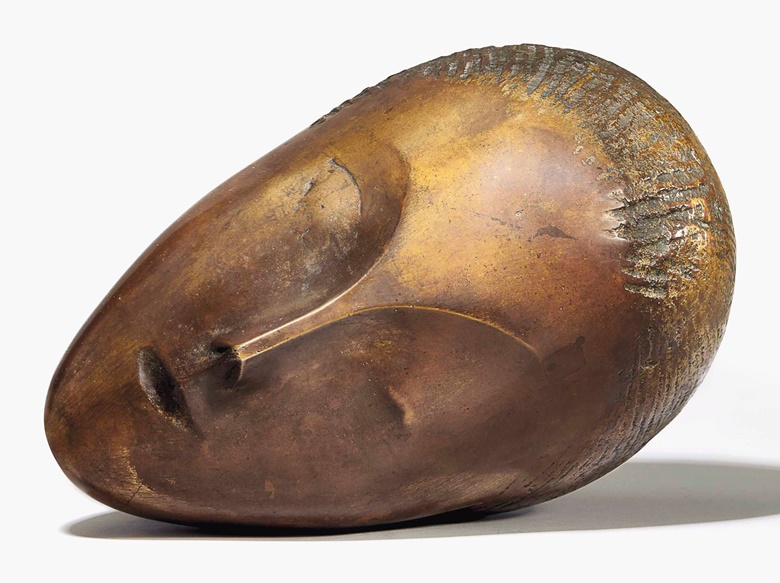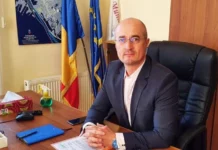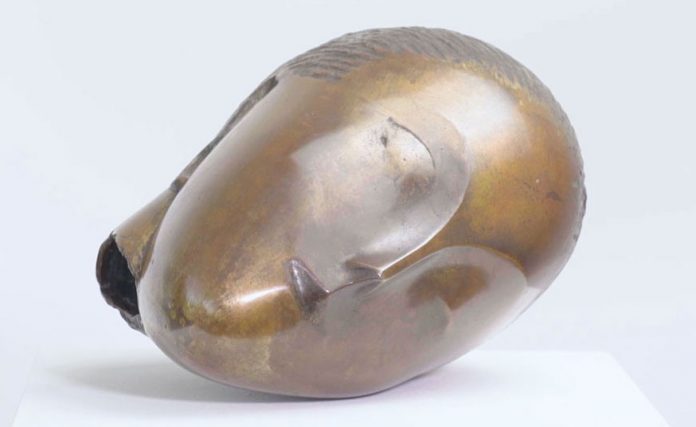‘A distillation of form and feeling’ — Brancusi’s La muse endormie
Art critic Alastair Sooke and Christie’s specialist Anika Guntrum look at the first in Brancusi’s series of ovoid sculptures — works which came to define his sublime and inimitable visual poetry — offered in New York on 15 May
‘Constantin Brancusi is known today as the great patriarch of modern sculpture,’ observes art critic Alastair Sooke in his introduction to the above short film. A pioneer of modernism, he was the fifth of seven children born to Romanian peasants in the Carpathian mountains. He spent most of his working career in Paris, having arrived in the city in the summer of 1904, aged 28. According to legend, he had walked almost the entire way.
In short order, Brancusi obtained entrance to the École des Beaux-Arts and a job washing dishes to pay the bills. His early work from Paris was heavily influenced by Rodin, and in March 1907 he secured a position as a pointing technician in the master’s studio, transferring his compositions from clay into stone. He left after only a month, however, famously proclaiming, ‘Nothing grows under big trees’.
‘He needed to fly with his own wings,’ explains Christie’s specialist Anika Guntrum. ‘It was far too classical for him… He really broke with tradition and created his own modernist aesthetic.’
Having prowled the halls of the Louvre, the Trocadéro, and the Musée Guimet, immersing himself in the archaic art of Egypt, Assyria, Iberia, and East Asia, Brancusi visited the the Salon d’Automne in late 1906, where Gauguin’s audaciously anti-classical figures carved in Polynesia struck him with the force of a revelation. By the end of 1907, Brancusi decided that he too had to cast aside the lessons of his long academic training. Forsaking the refined, professional Western tradition of modelling and casting, he began to carve directly in wood and stone. It was, he later declared, his ‘road to Damascus’.

Constantin Brancusi (1867-1957), La muse endormie. Original marble version carved in 1909-1910; this bronze version cast by 1913. Signed ‘Brancusi’ (on the back of the neck). Patinated bronze with gold leaf. Length: 10½ in (26.7 cm). Estimate: $20-30 million. This lot is offered in Impressionist & Modern Art Evening Sale on 15 May 2017, at Christie’s in New York
‘In 1909 Brancusi created the first La muse endormie in marble, which is now at the Hirshorn Museum and Sculpture Garden in Washington, D.C.,’ says Guntrum. ‘From this marble he cast a plaster mould, from which he then cast six bronzes. This is the sixth bronze that we know of from the series.’
According to Marielle Tabart, Honorary Curator at the Centre Georges Pompidou in Paris, Brancusi’s original muse was the Baroness Renée Frachon, who posed for Brancusi from 1908 to 1910. Following a number of preliminary studies modelled in clay, a first version carved in stone (now lost) was a ‘portrait’ standing upright, with a stylised oval face in which the geometric nose and mouth are slightly asymmetrical.
Brancusi was an incredible craftsman and artisan, and considered each of these bronzes a unique work of art, not a part of a uniform edition. ‘He handled every one of his objects himself, including this one,’ says the specialist. ‘He patinated and did the gilding himself; he never gave an object to a founder to create a finishing effect. Within a group you can say that every object is unique, because he treated each one differently.’
One of Brancusi’s mantras was, ‘Create like a god, command like a king, work like a slave’
This bronze was taken from the original intermediate plaster, patinated with shellac and kept by the artist in his studio. The imperfections in the casting plaster can be seen in the bronze itself, partly patinated, polished and gilded with gold leaf, a practice Brancusi used from his first casts in polished bronze.
One of Brancusi’s mantras was, ‘Create like a god, command like a king, work like a slave’. Friends recalled the sculptor’s long, meditative sessions of polishing over the course of weeks and even months, as he worked to perfect his desired effects. ‘An artist should always do his own chores,’ he insisted. ‘A sculptor’s toil is slow and solitary.’
In La muse endormie, the form of a sleeping woman’s head has been distilled into an almost perfect oval, the purity of outline marked only by subtle, attenuated allusions to the physical features of the model. ‘It’s an extraordinary object that communicates an incredible depth of serenity and thoughtfulness,’ says Guntrum.
La muse endormie was acquired by the distinguished French collector Jacques UImann in the 1950s and has remained in his family to this day. ‘He acquired Number 13 by Jackson Pollock, now in the Saint Louis Art Museum; Tête de Fernande in plaster by Picasso from Ambroise Vollard; countless paintings by Dali, Ernst and the Surrealist artists, as well as Tribal art,’ says Guntrum. ‘Jacques UImann was Dubuffet’s earliest supporter, and not only financially supported him by acquiring his works but also championed the artist to the international market. These works, along with La muse endormie by Brancusi now being offered for sale, are a testament to his extraordinary eye and the passionate quest for art that challenges and delights.’









































